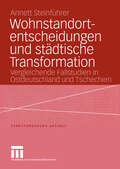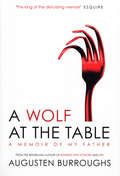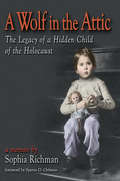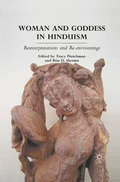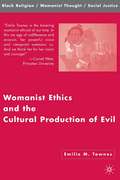- Table View
- List View
Wohnräume als pädagogische Herausforderung: Lebenslagen institutionalisiert lebender Menschen mit Behinderung
by Hendrik TrescherHendrik Trescher zeigt, dass der Heimalltag von Menschen mit Behinderungen oftmals von Regulierung, Überwachung und asymmetrischen Abhängigkeitsverhältnissen geprägt ist. Er stellt fest, dass HeimbewohnerInnen vom Steuerungssystem der sogenannten Behindertenhilfe in ihrer persönlichen Handlungsökonomie und Persönlichkeitsentwicklung eingeengt werden, sodass Wohnen, verstanden als eine auch emotionale Aneignungspraxis von Raum, kaum gelingen kann. Menschen mit Behinderung werden ‚bürokratiebehindert‘. Heime, die eigentlich als Unterstützungssysteme gedacht sind, werden durch das von ihnen aufgefächerte allumfassende pädagogische Protektorat selbst zu Behinderungsfaktoren, da sie Teilhabe an alltäglichen Praxen jenseits der Institution teilweise massiv einschränken. Der Autor liefert abschließend konkrete konzeptionelle und pädagogisch-praktische Vorschläge und Anregungen.
Wohnstandort und räumliche Mobilität im Kontext steigender Frauenerwerbstätigkeit: Eine Analyse für West- und Ostdeutschland
by Shih-Cheng LienShih-cheng Lien untersucht die Bedeutung der gestiegenen Frauenerwerbstätigkeit für die Veränderungen von Wohnstandort und räumlicher Mobilität. Mit Hilfe einer sekundärstatistischen Analyse des Sozioökonomischen Panels (SOEP) für die Jahre 1993 bis 2008 analysiert sie die zunehmende Ausdifferenzierung der Lebensführung von Frauen – Lebensformen, Erwerbsbeteiligung und Arbeitszeit – in Abhängigkeit vom Bildungsniveau und die daraus folgenden Tendenzen der räumlichen Entwicklung bezüglich Alltagsmobilität, Wohnmobilität und Wohnstandortentscheidungen unterschiedlicher Haushaltstypen. Ein besonderes Augenmerk legt die Autorin auf die unterschiedlichen Entwicklungen in Ost- und Westdeutschland.
Wohnstandortentscheidungen und städtische Transformation: Vergleichende Fallstudien in Ostdeutschland und Tschechien (Stadtforschung aktuell #99)
by Annett SteinführerDiese vergleichende Analyse untersucht am Beispiel von Leipzig und Brünn (Brno) sich wandelnde Wohnungsmärkte und Segregationsmuster - und erklärt, warum sich diese anders entwickelten, als zu Beginn der Transformationsphase angenommen.
Wohnstandortpräferenzen und Mobilitätsverhalten: Verkehrsmittelwahl im Raum Köln (VS College)
by Julia JarassDas Mobilitätsverhalten zu bestimmen, ist seit jeher ein Anliegen von Politik und Planung. Welche Faktoren wirken sich auf das Mobilitätsverhalten aus und wie können diese gelenkt werden? Neben siedlungsstrukturellen Parametern treten in der Verkehrsgeneseforschung aufgrund gesellschaftlicher Individualisierungstendenzen zunehmend individuelle Faktoren, z. B. soziodemographische Merkmale und Lebensstile in den Vordergrund. Julia Jarass untersucht mittels deskriptiver und multivariater Statistik, ob ein Zusammenhang zwischen Raumstruktur, Wohnstandortpräferenzen und Verkehrsverhalten nachgewiesen werden kann. Sie vergleicht urbane und suburbane Siedlungsstrukturen sowie die Präferenzen für diese Siedlungsstrukturen und analysiert deren Auswirkungen auf die Verkehrsmittelwahl.
Wohnungsforschung: Ein Reader (Interdisziplinäre Wohnungsforschung #2)
by Sebastian Schipper Lisa VollmerDie Wohnungsfrage ist zurück - und mit ihr eine neue Protestwelle, die in vielen sozial- und raumwissenschaftlichen Disziplinen das Interesse am Thema Wohnraumversorgung nachhaltig verstärkt. Mit einem Fokus auf das deutsche Wohnungssystem sind in diesem Reader sowohl klassische Texte als auch systematisierende Überblicksartikel der kritischen Wohnungsforschung versammelt. In ihrer Gesamtschau ergeben die polit-ökonomischen, historischen, soziologischen, (sozial-)räumlichen und akteurszentrierten Zugriffe ein Lesebuch, das für Studierende, Forschende sowie für Praktiker*innen aus Politik, Verwaltung und sozialen Bewegungen gleichermaßen konstruktiv ist.
Wohnungsfragen ohne Ende?!: Ressourcen für eine soziale Wohnraumversorgung (Interdisziplinäre Wohnungsforschung #1)
by Barbara Schönig Lisa VollmerStädte und Regionen sind mit einer Vielzahl an Wohnungsfragen konfrontiert: In wachsenden Metropolregionen und Mittelstädten in Deutschland steigen Mieten und Bodenpreise seit Jahren. Andernorts fehlt es vor allem an bedarfsgerechtem Wohnraum. So wird es für weite Teile der Bevölkerung von einkommensschwachen Haushalten bis zur Mittelschicht, für Studierende oder Senior/-innen immer schwieriger, bezahlbaren und angemessenen Wohnraum zu finden. Dabei ständen durchaus geeignete Politiken und Instrumente für eine sozial gerechte Wohnraumversorgung zur Verfügung. Im Buch diskutieren Autor/-innen aus Wissenschaft, kommunaler Praxis und sozialen Bewegungen »Ressourcen für ein Recht auf Wohnen« in vier Bereichen: Sie schauen auf die Nutzung städtischen Bodens, die Rollen der Wohnungswirtschaft, das Potential der Rekommunalisierung von Wohnraum und die Ausprägung von Wohnungsfrage(n) jenseits (groß-)städtischen Wachstums.
Wohnungslos — arbeitslos — mittellos: Lebensläufe und aktuelle Sitation Nichtseßhafter
by Arno GiesbrechtWohnungslosigkeit im Diskurs Klinischer Sozialarbeit (Sozialer Wandel und Kohäsionsforschung)
by Carmen BöhmCarmen Böhm liefert einen Beitrag zur diskursiven Erforschung des fachlichen Umgangs Klinischer Sozialarbeit mit der sozial prekären Lage Wohnungslosigkeit, auf Basis der eingangs dargelegten Hypothese, Wohnungslosigkeit als ambivalenten gesellschaftlichen Zustand zu denken. Dabei wird deutlich, dass sich selbst diese Spezialdisziplin der Sozialen Arbeit, welche sich explizit der Adressierung marginalisierter Personengruppen verschreibt, kaum mit dieser Lage sowie deren sozio-politischer Bedingtheit befasst. Im Rahmen einer wissenssoziologischen Diskursanalyse der Fachzeitschrift „Klinische Sozialarbeit“ kann gezeigt werden, dass sich die relativ junge Disziplin vornehmlich an Zielgruppen wendet, deren Behandlung ihre dauerhafte Etablierung als Akteurin im Gesundheitswesen zu sichern scheinen.
Wohnungsnot, Geschlecht und Gesundheit: Eine Analyse von Teilhabe und Stigmatisierung
by Jan A. FinziIn diesem Open-Access-Buch wird in einem ersten Schritt theoretisch erarbeitet, weshalb Stigmatisierung ein inhärenter Bestandteil von Wohnungsnot ist, welche Konsequenzen diese konkret für die Teilhabe von Menschen in Wohnungsnot hat und weshalb die Verknüpfung mit Intersektionalität in mehrfacher Hinsicht (u. a. zur Reduktion des komplexen Phänomens Wohnungsnot) gewinnbringend ist. Basierend auf der Intersektionalen Mehrebenenanalyse von Winker und Degele wird dargelegt, wie die Multi-Methoden-Untersuchung aufgebaut ist. Im zweiten Schritt erfolgt dabei die Erläuterung der Untersuchung, welche über zwei Zugänge vier verschiedene Studien realisiert. Im Fokus stehen dabei die Öffentliche sowie strukturelle Stigmatisierung von Wohnungsnot. Die Ergebnisse bestätigen die vorab getroffenen Annahmen und liefern einen Überblick über die Stigmatisierung von Wohnungsnot.
Wohnungswechsel: Phänomenologie des Ein- und Auswohnens (Edition Kulturwissenschaft #240)
by Jürgen HasseEin Wohnungswechsel scheint in erster Linie logistische Herausforderungen zu bergen. Tatsächlich ist er aber auch ein existenzieller »Platzwechsel«, der die Umziehenden atmosphärisch mitunter abgründig berührt. Praktisch werden Umzüge nur selten zur Sache selbst- wie weltbezogener Reflexion, obwohl gerade sie fruchtbare Wege einer Hermeneutik des eigenen Selbst öffnen können. Mit der Mobilisierung des gesamten Hausrates verliert das alltägliche Wohnzeug sein vertrautes Gesicht und die Dinge brechen als biographische Male der Erinnerung in irritierender Weise auf. Jürgen Hasse nimmt in seiner Phänomenologie Wohnungsumzüge zum Anlass der Rekonstruktion von Geschichten der gelebten Zeit.
Wohungsversorgung für unterstützungsbedürftige Haushalte: Deutsche Wohnungspolitik im europäischen Vergleich
by Joachim KirchnerJoachim Kirchner untersucht, wie in Belgien, Deutschland, Frankreich, den Niederlanden, Österreich und Schweden ein belegungsgebundener Wohnungsbestand gesichert werden soll. Er analysiert den sozialen Mietwohnungssektor, die Sozialwohnungsquote und den wohnungspolitischen Kontext. Studien zu den einzelnen Ländern setzen sich mit der Historie der Wohnungspolitik, den Angebotssegmenten des Wohnungsmarktes und dem Wohngeldsystem auseinander.
A Wolf at the Table: A Memoir Of My Father
by Augusten BurroughsFrom the author:'My father doesn't feature much in Running with Scissors. And one of the reasons for this is because he didn't feature much in my life. But there's another reason, too: Our relationship was so complicated, so dark, so confusing and so big, that to tell the story would require a book. So finally, upon the death of my father in 2005, I decided to tell the story I have been most afraid yet most compelled to tell.'This prequel to international hit Running With Scissors tells the story of Augusten's relationship with his tormented father: a man who sent his wife mad and saw his other son run away from home, prior to Augusten going into foster care. Harrowing, insightful and amusing by turns.
Wolf Conflicts: A Sociological Study (Interspecies Encounters #1)
by Ketil Skogen Olve Krange Helene FigariWolf populations have recently made a comeback in Northern Europe and North America. These large carnivores can cause predictable conflicts by preying on livestock, and competing with hunters for game. But their arrivals often become deeply embedded in more general societal tensions, which arise alongside processes of social change that put considerable pressure on rural communities and on the rural working class in particular. Based on research and case studies conducted in Norway, Wolf Conflicts discusses various aspects of this complex picture, including conflicts over land use and conservation, and more general patterns of hegemony and resistance in modern societies.
A Wolf in the Attic: The Legacy of a Hidden Child of the Holocaust
by Sophia RichmanA Wolf in the Attic: Even though she was only two, the little girl knew she must never go into the attic. Strange noises came from there. Mama said there was a wolf upstairs, a hungry, dangerous wolf . . . but the truth was far more dangerous than that. Much too dangerous to tell a Jewish child marked for death. One cannot mourn what one doesn&’t acknowledge, and one cannot heal if one does not mourn . . . A Wolf in the Attic is a powerful memoir written by a psychoanalyst who was a hidden child in Poland during World War II. Her story, in addition to its immediate impact, illustrates her struggle to come to terms with the powerful yet sometimes subtle impact of childhood trauma.In the author's words: “As a very young child I experienced the Holocaust in a way that made it almost impossible to integrate and make sense of the experience. For me, there was no life before the war, no secure early childhood to hold in mind, no context in which to place what was happening to me and around me. The Holocaust was in the air that I breathed daily for the first four years of my life. I took it in deeply without awareness or critical judgment. I ingested it with the milk I drank from my mother&’s breast. It had the taste of fear and despair.”Born during the Holocaust in what was once a part of Poland, Sophia Richman spent her early years in hiding in a small village near Lwów, the city where she was born. Hidden in plain sight, both she and her mother passed as Christian Poles. Later, her father, who escaped from a concentration camp, found them and hid in their attic until the liberation.The story of the miraculous survival of this Jewish family is only the beginning of their long journey out of the Holocaust. The war years are followed by migration and displacement as the refugees search for a new homeland. They move from Ukraine to Poland to France and eventually settle in America. A Wolf in the Attic traces the effects of the author&’s experiences on her role as an American teen, a wife, a mother, and eventually, a psychoanalyst. A Wolf in the Attic explores the impact of early childhood trauma on the author&’s: education career choices attitudes toward therapy, both as patient and therapist social interactions love/family relationships parenting style and decisions regarding her daughter religious orientationRepeatedly told by her parents that she was too young to remember the war years, Sophia spent much of her life trying to ”remember to forget” what she did indeed remember. A Wolf in the Attic follows her life as she gradually becomes able to reclaim her past, to understand its impact on her life and the choices she has made, and finally, to heal a part of herself that she had been so long taught to deny.
A Wolf in the Attic: The Legacy of a Hidden Child of the Holocaust
by Sophia RichmanA Wolf in the Attic: Even though she was only two, the little girl knew she must never go into the attic. Strange noises came from there. Mama said there was a wolf upstairs, a hungry, dangerous wolf . . . but the truth was far more dangerous than that. Much too dangerous to tell a Jewish child marked for death. One cannot mourn what one doesn&’t acknowledge, and one cannot heal if one does not mourn . . . A Wolf in the Attic is a powerful memoir written by a psychoanalyst who was a hidden child in Poland during World War II. Her story, in addition to its immediate impact, illustrates her struggle to come to terms with the powerful yet sometimes subtle impact of childhood trauma.In the author's words: “As a very young child I experienced the Holocaust in a way that made it almost impossible to integrate and make sense of the experience. For me, there was no life before the war, no secure early childhood to hold in mind, no context in which to place what was happening to me and around me. The Holocaust was in the air that I breathed daily for the first four years of my life. I took it in deeply without awareness or critical judgment. I ingested it with the milk I drank from my mother&’s breast. It had the taste of fear and despair.”Born during the Holocaust in what was once a part of Poland, Sophia Richman spent her early years in hiding in a small village near Lwów, the city where she was born. Hidden in plain sight, both she and her mother passed as Christian Poles. Later, her father, who escaped from a concentration camp, found them and hid in their attic until the liberation.The story of the miraculous survival of this Jewish family is only the beginning of their long journey out of the Holocaust. The war years are followed by migration and displacement as the refugees search for a new homeland. They move from Ukraine to Poland to France and eventually settle in America. A Wolf in the Attic traces the effects of the author&’s experiences on her role as an American teen, a wife, a mother, and eventually, a psychoanalyst. A Wolf in the Attic explores the impact of early childhood trauma on the author&’s: education career choices attitudes toward therapy, both as patient and therapist social interactions love/family relationships parenting style and decisions regarding her daughter religious orientationRepeatedly told by her parents that she was too young to remember the war years, Sophia spent much of her life trying to ”remember to forget” what she did indeed remember. A Wolf in the Attic follows her life as she gradually becomes able to reclaim her past, to understand its impact on her life and the choices she has made, and finally, to heal a part of herself that she had been so long taught to deny.
Woman and Goddess in Hinduism: Reinterpretations and Re-envisionings
by T. Pintchman R. ShermaOffering multilayered explorations of Hindu understandings of the Feminine, both human and divine, this book emphasizes theological and activist methods and aims over historical, anthropological, and literary ones.
The Woman as Slave in Nineteenth-Century American Social Movements (Palgrave Studies in the History of Social Movements)
by Ana StevensonThis book is the first to develop a history of the analogy between woman and slave, charting its changing meanings and enduring implications across the social movements of the long nineteenth century. Looking beyond its foundations in the antislavery and women’s rights movements, this book examines the influence of the woman-slave analogy in popular culture along with its use across the dress reform, labor, suffrage, free love, racial uplift, and anti-vice movements. At once provocative and commonplace, the woman-slave analogy was used to exceptionally varied ends in the era of chattel slavery and slave emancipation. Yet, as this book reveals, a more diverse assembly of reformers both accepted and embraced a woman-as-slave worldview than has previously been appreciated. One of the most significant yet controversial rhetorical strategies in the history of feminism, the legacy of the woman-slave analogy continues to underpin the debates that shape feminist theory today.
Woman, Body, Desire in Post-Colonial India: Narratives of Gender and Sexuality
by Jyoti PuriFirst published in 1999. Routledge is an imprint of Taylor & Francis, an informa company.
Woman, Body, Desire in Post-Colonial India: Narratives of Gender and Sexuality
by Jyoti PuriFirst published in 1999. Routledge is an imprint of Taylor & Francis, an informa company.
The Woman on the Windowsill: A Tale of Mystery in Several Parts
by Sylvia Sellers-GarciaA true story of violence and punishment that illuminates a transformative moment in Guatemalan history On the morning of July 1, 1800, a surveyor and mapmaker named Cayetano Díaz opened the window of his study in Guatemala City to find a horrific sight: a pair of severed breasts. Offering a meticulously researched and evocative account of the quest to find the perpetrator and understand the motives behind such a brutal act, this volume pinpoints the sensational crime as a watershed moment in Guatemalan history that radically changed the nature of justice and the established social order. Sylvia Sellers-García reveals how this bizarre and macabre event spurred an increased attention to crime that resulted in more forceful policing and reflected important policy decisions not only in Guatemala but across Latin America. This fascinating book is both an engaging criminal case study and a broader consideration of the forces shaping Guatemala City at the brink of the modern era.
The Woman Scientist: Meeting the Challenges for a Successful Career
by Clarice M. Yentsch Carl J. SindermannWomanism against Socially Constructed Matriarchal Images: A Theoretical Model toward a Therapeutic Goal (Black Religion/Womanist Thought/Social Justice)
by M. HillThis book stems from a concern to assist pastoral counsellors in developing a therapeutic alliance with African-American women. It focuses on the social construct of the African-American matriarch, which can easily misinform the counsellor and cause emotional jeopardy for African-American women who attempt to live up to its expectations.
Womanist Ethics and the Cultural Production of Evil (Black Religion/Womanist Thought/Social Justice)
by Emilie M. TownesThis groundbreaking book provides an analytical tool to understand how and why evil works in the world as it does. Deconstructing memory, history, and myth as received wisdom, the volume critically examines racism, sexism, poverty, and stereotypes.
The Womanist Idea
by Layli MaparyanFollowing on the heels of The Womanist Reader, The Womanist Idea offers a comprehensive, systematic analysis of womanism, including a detailed discussion of the womanist worldview (cosmology, ontology, epistemology, logic, axiology, and methodology) and its implications for activism. From a womanist perspective, social and ecological change is necessarily undergirded by spirituality – as distinct from religion per se – which invokes a metaphysically informed approach to activism.
The Womanist Idea
by Layli MaparyanFollowing on the heels of The Womanist Reader, The Womanist Idea offers a comprehensive, systematic analysis of womanism, including a detailed discussion of the womanist worldview (cosmology, ontology, epistemology, logic, axiology, and methodology) and its implications for activism. From a womanist perspective, social and ecological change is necessarily undergirded by spirituality – as distinct from religion per se – which invokes a metaphysically informed approach to activism.


